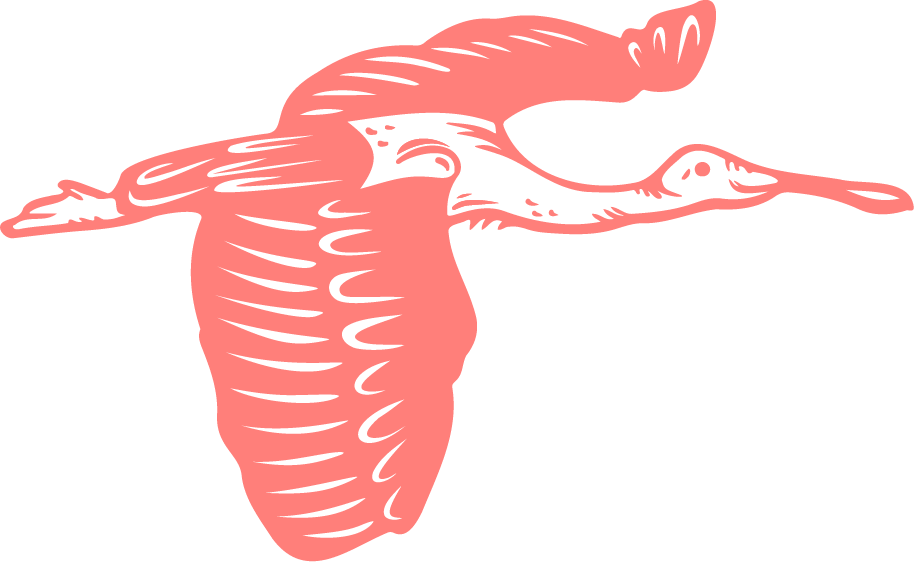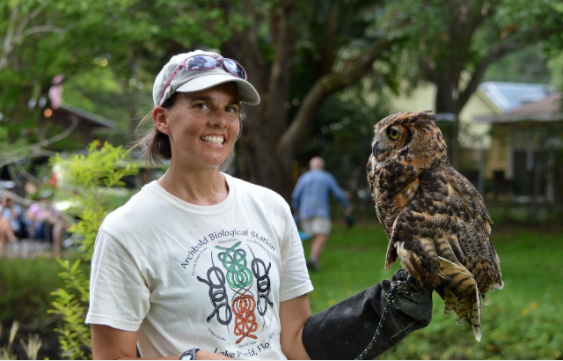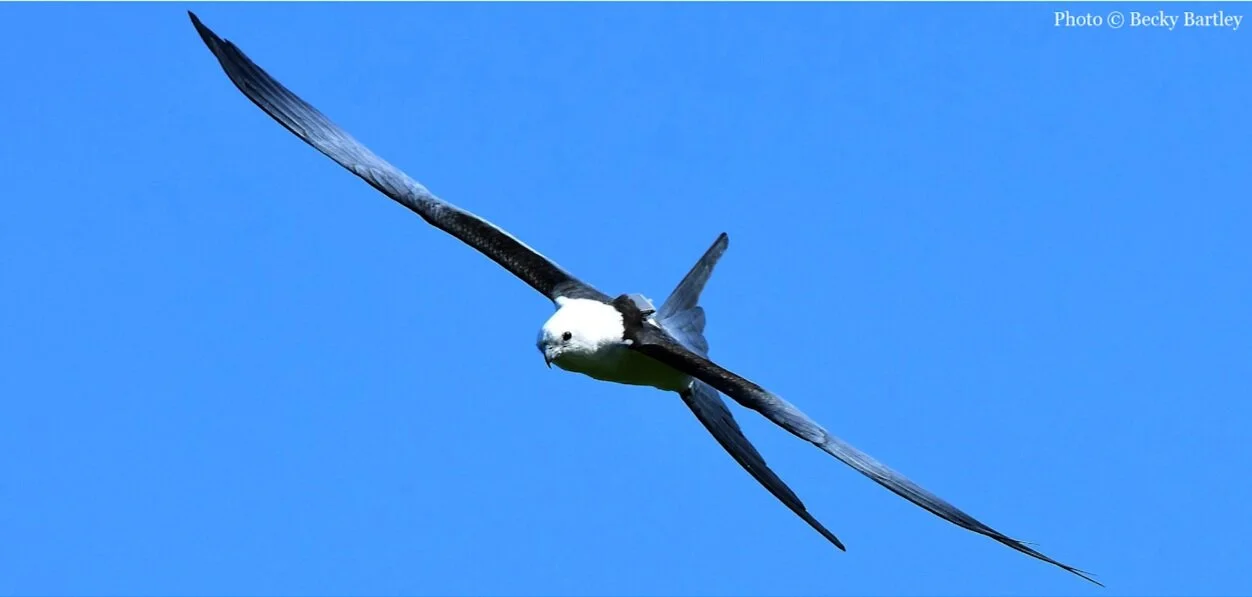Meet the Birds
Gina and Trapper | Photo: J. Clayton
Trapper
Trapper is a female great horned owl originally found injured near Tallahassee, Florida in 2005. She has been working with Avian Research and Conservation Institute (ARCI) since 2005 and has been instrumental in the capture of over 50 Swallow-tailed Kites and 10 Short-tailed Hawks! When she is not on the road with ARCI, she is in the loving care of the folks at the Avian Reconditioning Center (ARC) in Apopka, Florida. There, she takes the role as surrogate mom and acclimates orphan great horned owl chicks to their kind prior to their release.
ARCI takes raptor trapping very seriously, paying careful attention to detail to make sure everything is as safe as can be for the raptors. One method ARCI uses involves a very tall net and Trapper, who sits on a low perch nearby. Great horned owls are highly skilled predators that sometimes prey on raptors. When raptors come close to check out the owl they sometimes get caught in the net. ARCI's team hides nearby and collects the netted raptor and Trapper the owl, getting them both into a cool, calm place as soon as possible. The raptors are carefully measured, banded, and fitted with a transmitter right on site and released as soon as possible.
Read Trapper's success story at Avian Reconditioning Center.
Sawgrass | Photo: Becky Bartley
Sawgrass
Sawgrass is a Swallow-tailed Kite. She was named after Sawgrass Lake Park, where she was caught and tagged. Swallow-tailed Kites were once a common summertime sight in the skies over the southeast US, but now are found mostly over Florida. Their distinct black and white plumage, and deeply forked tail make them easy to identify, and their aerial acrobatics make them a joy to watch. Swallow-tailed Kites hunt flying insects and tree-dwellers, plucking snakes, lizards and frogs off branches.
Sawgrass is a completely wild bird - except for the brief time during which she was tagged, she has had no direct contact with humans. She's also a bit of a renegade, frequently charting her own course during migration.
Swallow-tailed Kites are climate threatened. Tracking Sawgrass' movements will help scientists understand how best to direct efforts to ensure the species' survival.
Sawgrass’s Journey
Dark Arrow | Photo: J. Clayton
Dark Arrow
Dark Arrow is a Short-tailed Hawk. The name "Dark Arrow" was derived from a small lake within Sawgrass Lake Park, his dark-morph coloration, and the fact that, when caught, he hit the net like an arrow!
Short-tailed Hawks range over Central and South America, but in the US are found only in Florida and sometimes in the states along the Mexican border.
Short-tailed Hawks soar very high and hunt by diving steeply over small birds - usually those perched on the top of trees or in the open on branches. Occasionally they will also feed upon lizards, snakes and frogs.
Like Sawgrass, Dark Arrow has had, with the exception of tagging, no direct contact with humans.
Dark Arrow is not expected to migrate, but instead will likely remain near his home base at Sawgrass Lake Park. His movements provide a direct contrast to those of Sawgrass. Dark Arrow is featured in the Short-tailed Hawk blog, here, on the ARCI website.







